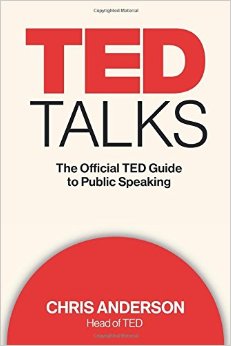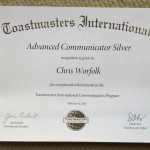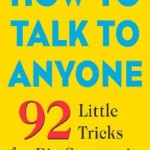TED Talks: The Official TED Guide to Public Speaking is a book by Chris Anderson, curator of TED, on how to deliver a great talk. It is aimed to give advice to everyone, not just people speaking at TED, and while all the examples are from TED, there is much to be learned from anyone looking to give a speech.
As with a great TED talk, Anderson starts the book by creating a vision. An idea is a thought pattern in your head, and your challenge is to replicate that thought pattern inside the mind of each of your audience members. He then goes on to explain how to do this, step by step.
Most of the book concentrates on the idea of getting your message correct. This makes sense because it is more important than delivery and you can do in written form. If your body language or voice is not perfect, this matters less than having a great message. Nor can you teach these skills effectively in a book.
There are also discussions of the fine lines you run into when speaking. Sharing personal stories for example. Generally speakers don’t do enough of this. Showing an audience your vulnerabilities and being open about some of the challenges you have faced really helps you connect with an audience. But you can overshare and even make them feel uncomfortable if you go too far.
Similarly, how much should you rehearse. Should you do it word-for-word or just rehearse ideas? Word-for-words means you will know it better and get it right: but it can also sound forced and unnatural. Both approaches can work. However, in general word-for-word is better. Many speakers, usually with high opinions of themselves, will talk about how they just blag it and it comes out brilliantly. For a tiny proportion of speakers this may be true. However, for most they simply do not sound as good as they think they do. In comparison, I am often complement for how natural and unrehearsed I sound. The speeches that people usually make those comments are the ones I have rehearsed to death: my guess is that that style only comes from the confidence of knowing your speech inside out.
I was quite pleased when the book suggested you should use blank slides to bring the audience back to you. I use this in my speeches, but I have never seen or heard anyone else suggest it before, so it was nice to see TED recommends it too.
One interesting point of contention was the pace you should speak at. At Toastmasters, we always tell people to slow down. TED says the opposite. People can digest faster than you can physically say things, so why would you slow down for anything other than the complicated bits that cause a high cognitive load on your audience? I see their point. If your audience can comprehend you speaking at normal conversation speed, why not pack in more information?
I think both these points of view can be reconciled. A Toastmasters, we’re typically teaching nervous speakers to get over their fears. When people are anxious they speak faster. Slowing down is a skill you need to learn and practice because otherwise you will go a million miles per hour. However, once you have learned to go at your own paces, to add pauses in the right places and to speed up and slow down as required, then you can use that skill to speed up as appropriate.

Don't have time to check my blog? Get a weekly email with all the new posts. This is my personal blog, so obviously it is 100% spam free.
Tags: chris anderson, public speaking, talks, ted
This entry was posted on Wednesday, September 14th, 2016 at 11:00 am and is filed under Books. You can follow any responses to this entry through the RSS 2.0 feed. Both comments and pings are currently closed.

